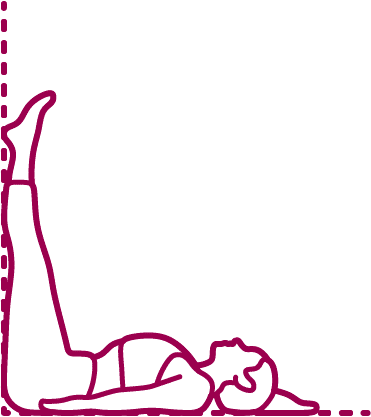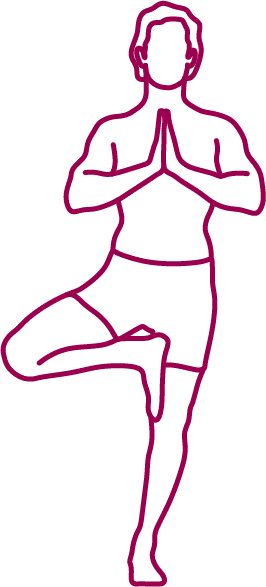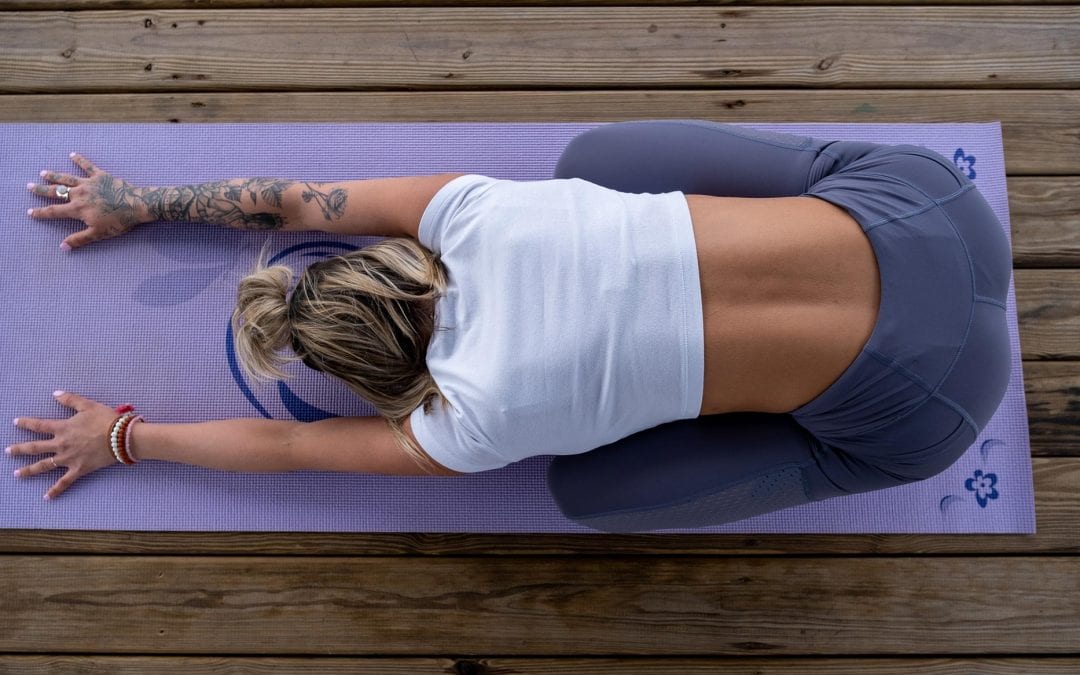Yoga as a Natural Remedy for Anxiety and Stress
Yoga is not just good for your body. Every time you practice yoga, you are building your immunity to anxiety and stress. Scientific literature shows that Yoga is extremely effective for decreasing stress , making us better able to handle difficult situations, feel happier and more able to see things from other people’s point of view. Yoga decreases blood pressure, heart rate and cortisol. It is associated with positive metabolic brain changes and influences the sympathetic nervous system. Specifically it helps the HPA axis or hypothalamic-pituitary-adrenal axis which is what is triggered when we are stressed. No wonder Yoga can be a great help in alleviating the symptoms of anxiety!
What is Anxiety?
Think of anxiety as your mind’s response to stress. Our body has a reaction to stress in the form of increased heart rate and adrenal output – so it makes sense that the mind reacts to stress too. When we are in a state of chronic stress, this can lead to chronic states of anxiety. We were built to be anxious sometimes. It is natural. But when the nervous system becomes accustomed to living in a hyper-stimulated state, the body begins to live in chronic stress, which sets the stage for living in a constant low-level of anxiety which can be set off at any time – even when we are not in a stressful situation.
How to use Yoga to Interrupt Anxiety and Stress
One of the things I have found is that yoga is very useful in many ways. One of them is that Yoga poses help you develop a closer relationship with your body and bodily sensations. This makes it easier for you to sense the early symptoms of anxiety coming on sooner and interrupt them before they get too overwhelming. Often, by the time anxiety is full-blown, it is too late to short circuit it.
When you feel symptoms of anxiety coming on, the best thing to do is act immediately. If you are in bed, just waking up, and you feel the symptoms coming on – get out of bed and find a way to interrupt the bodily pattern of anxiety. It may take a few tries to find out what works for you. It could be yogic breaths, going for a brisk walk, a run or doing some yoga poses. The more quickly and consistently you can interrupt and re-direct the pattern, the more you will be able to manage it and even lessen its severity.
Some people respond more to calming poses to interrupt anxiety. Others find that in the moment of escalation they need to do something more dynamic to short circuit the event. In that case, calming poses work best to prevent anxiety symptoms from occurring in the first place.
Here’s 3 of the Best Yoga Poses for Anxiety:
Balasana: Child’s Pose

Notes and Modifications:
- Make the pose work for you so that you can remain here comfortably for 30 seconds to 1 minute.
- If you cannot sit on your heels, sit on a block.
- If your forehead does not reach the floor, place your fist (or both fists) under the forehead to make up the distance between the forehead and the floor.
- Arms may be alongside the body or alongside the head.
- You may separate the knees if there is too much compression in the abdomen.
Why does Child’s pose work for Anxiety?
There are two major ways Child’s Pose manages anxiety. While all yoga poses encourage deep diaphragmatic breathing, in child’s pose, the spine is relaxed in the forward fold, and the gentle compression of the abdomen on the thighs combined with the gentle stretch in the back body – especially in the back of the diaphragm area – naturally encourages deep breathing which is essential for the management of anxiety. The compression also forces a longer exhalation which in and of itself is calming.
In addition, certain types of poses are considered to foster certain types of energy in the body. These two qualities are called “brahmana”, which build energy and vitality and “langhana” which are poses that are more grounding and calming. Backbends for example are considered to build energy while quieter and easier forward bends such as child’s pose tend to be more calming to the nervous system.

Viparita Karani: Legs up the Wall
Notes and Modifications:
- Sit sideways to the wall and swing your legs up. Adjust your body to a comfortable place.
- This pose gives you all the benefits of an inversion without any contraindications for head and neck.
- If your hamstrings are tight, you may need to move a little bit away from the wall. Adjust the pose so that you continue to feel a nice opening, but your body should not be tightening or feel stressed.
Why does Legs Up the Wall (Viparita Karani) work for anxiety?
Legs Up the Wall is considered one of the ultimate “langhana” poses as easy inversions such as this one are very quieting and calming to the nervous system without putting undue pressure on the neck and head. This pose literally inverts our stance in the world – by turning our activity (standing) to receptivity (inverting the legs). This pose is the ultimate “non-doing” pose. It teaches us how to let go and recognize that sometimes life also comes to us through receptivity and grace – not just hard work and struggle. Turning our usual stance in the world upside down, the only “work” we have to do here is let go of any effort, struggle or striving. This pose teaches the body and nervous system to let go and receive! For the anxious person, this release of the need to do anything can do wonders. For those with extra busy minds, this can combine well with any breathing technique such as ujjayi breath, three part yogic breath or a simple counted breath (inhale, two, three, four…exhale, two, three, four).

Vrikshasana: Tree Pose
Notes and modifications:
- If you are just learning this pose, place your foot on the inside of your ankle so the toes can help you balance if needed.
- Calmly enter and exit the pose. If you lose your balance, mindfully place your foot on the floor and bring it back up. Make this experience a part of the pose rather than resisting it.
- The foot can be placed anywhere along the inside of the leg, except at the knee.
- Be mindful of knees and torque in the knees.
- The point of this pose for anxiety is developing the ability to maintain mindful focus. This is what creates balance in both body and mind, so it is important to approach every aspect of the pose slowly, meditatively and mindfully from entry to exit.
Why does Tree (Vrikshasana) work for Anxiety?
Any cognitive therapist will tell you that being able to manage and direct the flow of anxious thoughts is key. The concentration involved in this balance pose, as well as the balancing element itself, helps withdraw the mind from unhelpful thinking through the principle of focus. The balance pose itself demands focus which balances the function of the mind.
The balancing aspect of this pose establishes a good synchronization between nervous system and muscles and particularly enhances nervous system function. When you are balancing, you are automatically focusing the mind. While the disturbed and agitated mind causes imbalances in the body. A calm mind creates a balanced body – and vice versa.
Tree pose re-centers the person who has excess mental activity through calming the nerves. Nerves in Ayurveda (the sister science of Yoga) are associated with the air element (vata) in the body. Too much vata is associated with excess stress and anxiety. Tree pose enhances concentration, memory and thought processes and makes one mentally settled and relaxed. Most people who are stressed, agitated and moving around a lot in today’s world have a vata or air imbalance. This is one of the best for counterbalancing these effects.
Interested in learning more about Yoga?
Receive an in-depth education in yogic philosophy, practice, and advanced principles with our unique yoga studies curriculums.
RYT 200/300/500 HR certifications available.
References
- Chong, C. S. M., B.S., Tsunaka, M., B.S., Tsang, H. W. H., PhD., Chan, E. P., B.A., & Cheung, W. M., PhD. (2011). Effects of yoga on stress management in healthy adults: A systematic review. Alternative Therapies in Health and Medicine, 17(1), 32-8. https://search.proquest.com/docview/851708877?accountid=135943
- Pascoe, M. C., & Bauer, I. E. (2015). A systematic review of randomised control trials on the effects of yoga on stress measures and mood. Journal of Psychiatric Research, 68, 270-282. doi:10.1016/j.jpsychires.2015.07.013
- Yoga pose illustrations sourced from https://www.dimensions.com/

Kamini Desai Ph.D
Author
Kamini Desai is the Executive Director of the Amrit Yoga Institute. She is author of Yoga Nidra: The Art of Transformational Sleep and Life Lessons Love Lessons. You can learn more about Kamini on her website.

Love it! Will give it a try.
Do you have any weekend retreats? I would like to do something for my 20th wedding anniversary, which is in February. My wife and I do have some health issues, but it sounds like your courses are set for calming and anxiety reducing. We would both like massages, and learn some Hatha Yoga breathing exercises.
I am very familiar with yoga, and have read the Bhagavad-Gita and the Srimad Bhagavatan and other Vedic Literature. I believe in Karma, and striving for God Consciousness. I was a Hare Krsna in the 1970s for a while, but never renounced my material life completely.
My wife knows about several religions, and I have even taught her some about Hinduism. She was from a Jewish family, but never practiced it all that much, just on high holidays.
We need some Spiritual refreshing, and cleansing of our ‘life Scripts’ that creep in our marriage and make it toxic from time to time. We live in the Lecanto area, so would like to visit your retreat and have a relaxing stay to cleanse our spirits and bodies.
thanks, Mike McCulley